Koblenz cable car – a tourist attraction to the fortress
- Written by Portal Editor
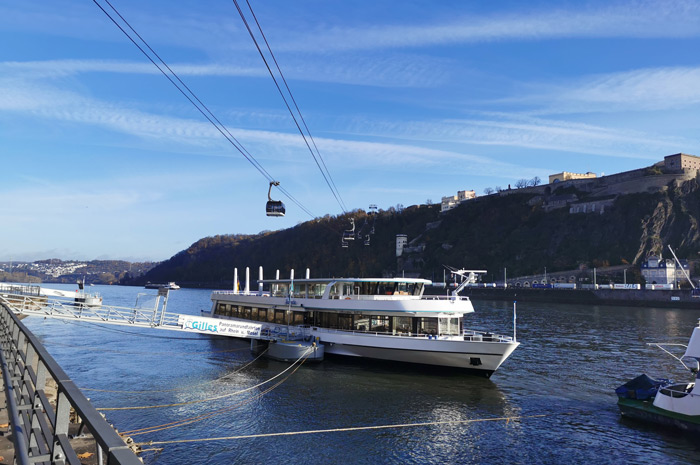
As a tourist attraction and environmentally friendly transport connection to Ehrenbreitstein Fortress, the Koblenz cable car was built as part of the 2011 Federal Horticultural Show, which is also known as the Buga cable car.

Since June 2010, the cable car has connected the Rhine facilities at the level of the Basilica of St. Castor with the plateau in front of the Ehrenbreitstein Fortress, the “Rhein-Mosel-Blick” viewing platform already described and, during the Buga exhibition, also the outdoor facilities next to the fortress grounds.
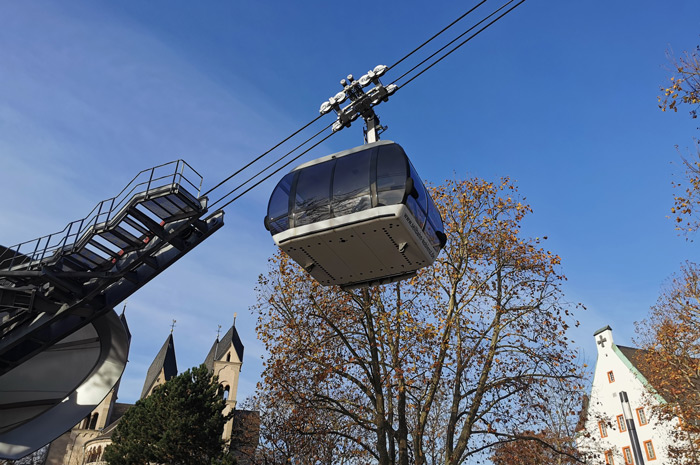
It was Germany's first three-cable gondola and, with a transport capacity of 7,600 people per hour, has the highest passenger transport capacity in Germany.
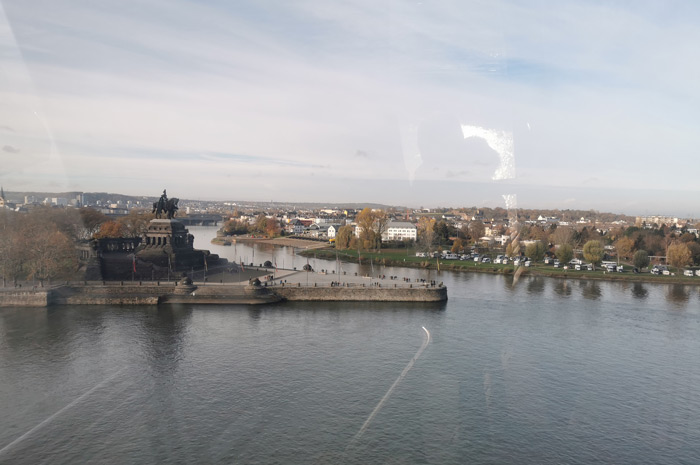
With a total length of 890 meters, the three-cable gondola climbs 112 meters between the two stations with the help of cables stretched freely across the Rhine.
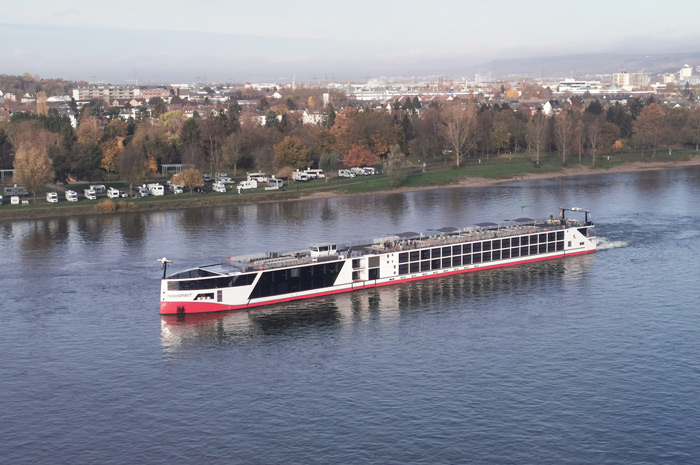
There is a cable car support directly at each station, the free span between the two supports is 850 meters.
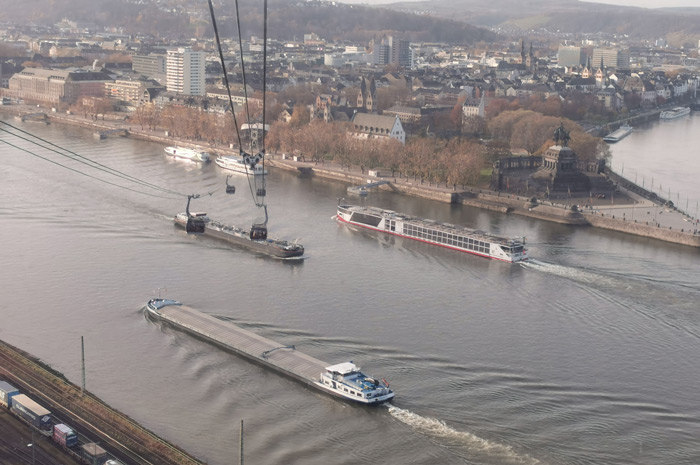
In each direction, the detachable cabins travel on two permanently installed carrying cables, each 54 millimetres thick and weighing 17 tons, and are moved by an evenly circulating, endlessly spliced traction cable.
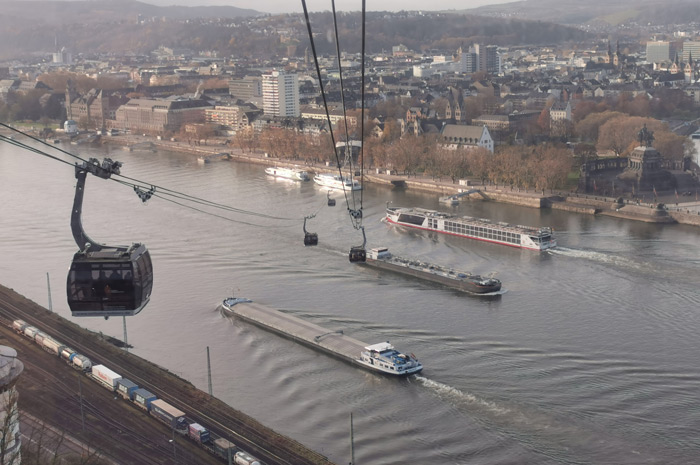
Work on the cable hoist began on January 26, 2010. A helicopter guided a first nylon rope from the mountain station down into the valley.
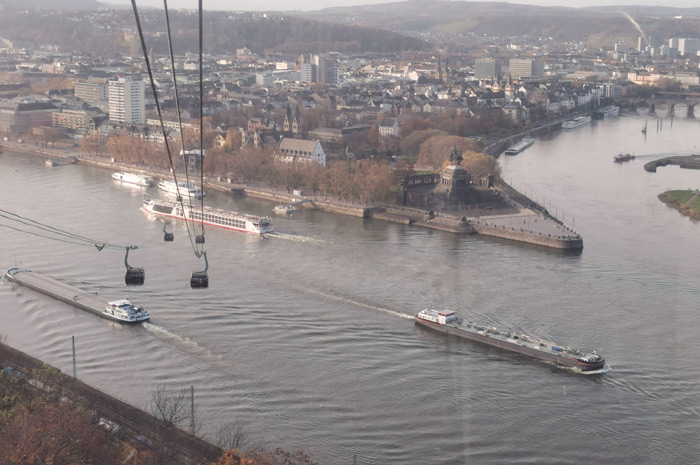
Four days later, the first two steel cables were brought across the Rhine using a floating pontoon and stretched between the two stations.
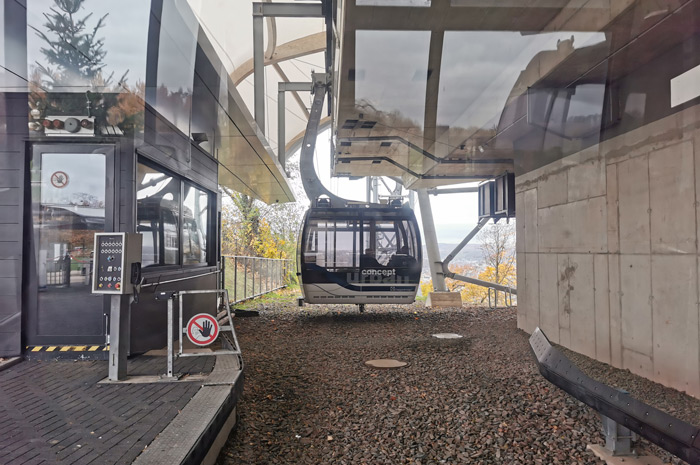
In the weeks that followed, these were replaced by thicker and thicker ropes. The first cabins were mounted in May 2010 on the pull cable that had been installed up to that point.
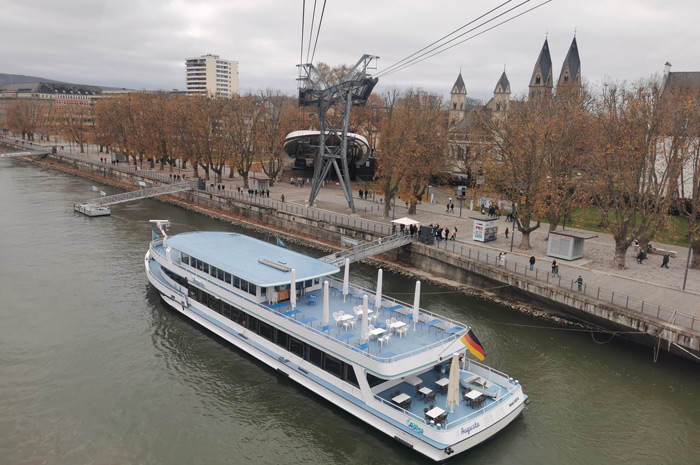
In the stations, they are automatically uncoupled from the traction cable and slowed down to disembark. There they drive hanging on rails around the curve to the boarding place.
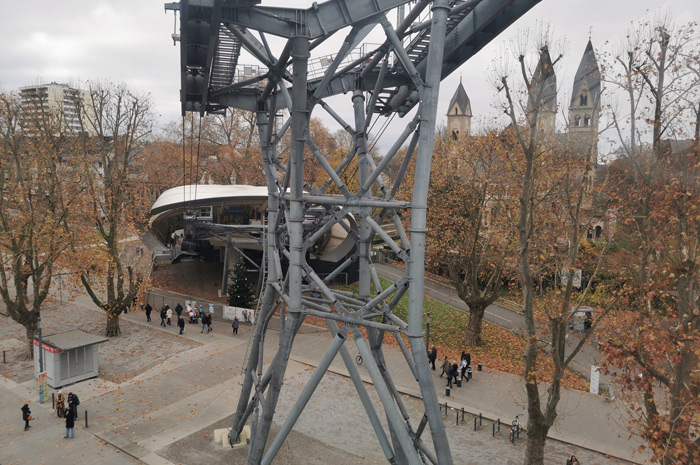
After the passengers have boarded, the cabin is accelerated, coupled to the traction cable again and driven in the opposite direction onto the two suspension cables.

Please also read: